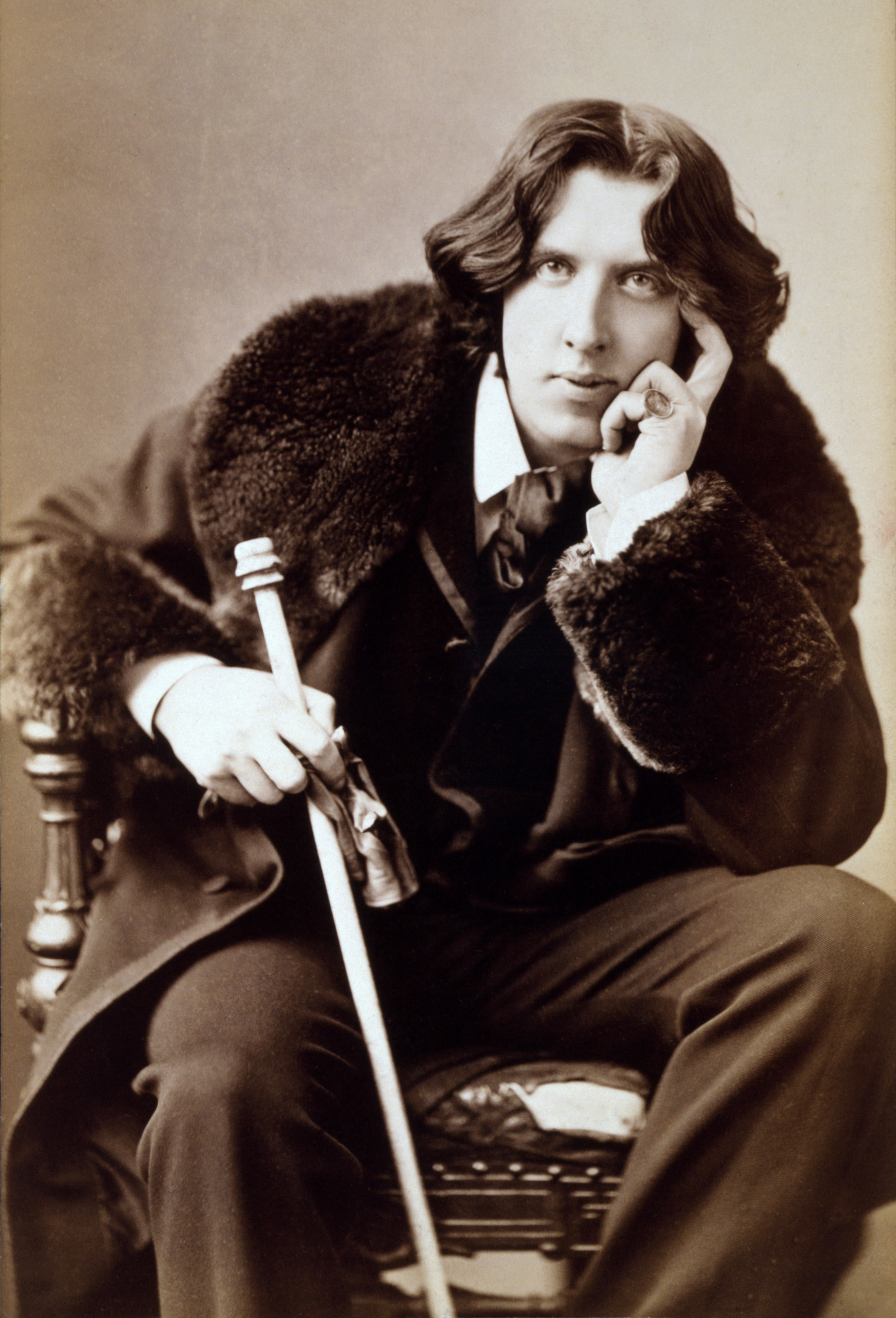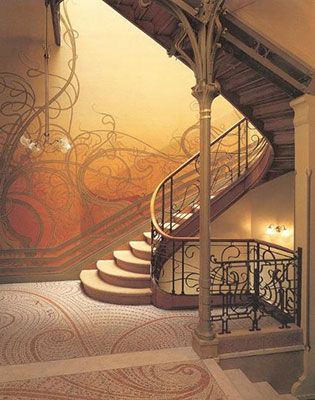 |
| Oscar Wilde challenged the norms of Victorian fashion by wearing colorful velvets and keeping his hair long |
"I have found that all ugly things are made by those who strive to make something beautiful, and that all beautiful things are made by those who strive to make something useful." -Oscar Wilde
Though classified as the Aesthetic Movement, there was no real organized movement that classifies it as such. To this day, critics still disagree over when this movement began and who should be included under this label (Burdett, 2014). It is thought to have begun around the mid-19th century (appx. 1860s) and lasted until about 1900. It's beginnings are thought to have been influenced by poet Algernon Swinburne and critic Walter Pater. Swinburne combined lyrical language with complex metrical rhythms to create aesthetically pleasing poetry. Influenced by French writers Charles Baudelaire and Theophile Gautier, he believed that poetry "had nothing to do with didacticism (the teaching of moral lessons)" and that beautiful poetic form made any subject admirable (Burdett, 2014). His works challenged the definitions of what was considered beautiful by including themes of sexuality, cruelty, and violence by presenting it in a morally ambiguous way. Pater praised the individualism of the Renaissance era artists during a time in which art of the Middle Ages was being celebrated. In his book Conclusion, he advised readers to concentrate their energies on the pleasures of all things lovely. Critics of these ideals viewed them as hedonistic and self-indulgent. Others viewed it as a means of casting off the Victorian moralism in the name of art (Burdett, 2014).
 |
| A caricature of Oscar Wilde as Narcissus |
"Beauty has as many meanings as man has moods. Beauty is the symbol of symbols. Beauty reveals everything, because it expresses nothing. When it shows itself, it shows us the whole fiery-colored world." -Oscar Wilde
Aesthetic art is characterized by its use of ornamentalism, organic lines, and nature-inspired images. It takes inspiration from Renaissance paintings, Greek sculptures, Japanese prints, and other art forms of the Orient. Painters would seek to evoke a mood or vague associations rather than a direct literary or historical connection. They would often employ synesthesia with the goal of deepening the experience of the viewer. Design artists sought to create household goods that were pleasing to the eye with carefully considered color and materials. Furniture was simple but elegant, referencing Asian, Egyptian, and Greek cultures in their designs. Ornate, decadent language in written works alluded to the grotesque and the erotic. Short lived this movement may have been, but the concept of "art for art's sake" is a value that continues to be held to this day in some circles.
 |
| Stairway at Hotel Tassel by Victor Horta. 1892-93 |
 |
| Frontispiece to Clarence Cook’s The House Beautiful: Essays on beds and tables, stools and candle sticks, Walter Crane, 1878 |
 |
| (Left) Daisy, tile, designed by William Morris, about 1862. (Right) Daisy, wallpaper pattern, designed by William Morris, about 1864. |
 |
| The Hay Field, painting, by Thomas Armstrong, 1869 |
Sources for this post:
“Art Nouveau | History, Characteristics, Artists, & Facts.” Encyclopedia Britannica. www.britannica.com, https://www.britannica.com/art/Art-Nouveau. Accessed 26 May 2020.
Burdett, Carolyn. “Aestheticism and Decadence.” The British Library, The British Library, 15 Mar. 2014. www.bl.uk, https://www.bl.uk/romantics-and-victorians/articles/aestheticism-and-decadence.
“Oscar Wilde.” Biography. www.biography.com, https://www.biography.com/writer/oscar-wilde. Accessed 7 Apr. 2020.
Stankiewicz, Mary Ann. “From the Aesthetic Movement to the Arts and Crafts Movement.” Studies in Art Education, vol. 33, no. 3, National Art Education Association, 1992, pp. 165–73. JSTOR, JSTOR, doi:10.2307/1320898.
Tate. “Aesthetic Movement – Art Term.” Tate. www.tate.org.uk, https://www.tate.org.uk/art/art-terms/a/aesthetic-movement. Accessed 16 Apr. 2020.
“V&A · An Introduction to the Aesthetic Movement.” Victoria and Albert Museum. www.vam.ac.uk, https://www.vam.ac.uk/articles/an-introduction-to-the-aesthetic-movement. Accessed 16 Apr. 2020.
No comments:
Post a Comment